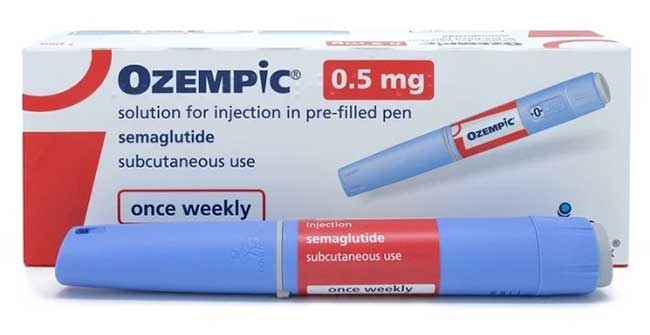
Ozempic and Wegovy, originally developed to treat Type 2 diabetes and obesity, respectively, have gained popularity as remedies for addictive tendencies.
They’re both GLP-1 receptor agonists containing the active compound semaglutide. Semaglutide has grown in popularity, with patients sharing other positive effects other than appetite suppression.
Reports indicate that Ozempic and Wegovy have helped a growing number of people overcome addictive behaviors such as:
- Smoking
- Drinking alcohol
- Gambling
- Nail biting
- Skin picking
- Online shopping
- Binge eating
It’s important to note that not everyone who uses these drugs will experience these positive effects.
Let’s take a look at the role of Ozempic, Wegovy, and other GLP-1 drugs in addiction treatment and the underlying mechanism.
How Do Ozempic, Wegovy, and Other GLP-1 Drugs Work to Curb Addiction?
You may be wondering how Ozempic, Wegovy and other GLP-1 drugs address addiction. Well, Ozempic and Wegovy are GLP-1 receptor antagonists that contain the compound semaglutide.
The semaglutide in Ozempic and Wegovy works by regulating the brain’s reward system through the GLP-1 receptor. Regulating the brain’s reward pathway, which is activated by addictive substances, makes these substances less appealing. This helps people resist cravings for compulsive behaviors like smoking, drinking, or eating.
In other words, Ozempic and Wegovy address addiction by making behaviors like smoking or alcohol consumption less pleasant or rewarding. These drugs reduce pleasure-seeking activities by reducing dopamine levels in the brain region involved in reward and addiction. Dopamine plays a critical role in creating an intense feeling of pleasure and reward.
Clinically, for example, some people will report having less desire to consume alcohol. If, for instance, they consume several glasses of wine, they’ll tend to consume half a glass of wine and leave the rest of the wine. This could imply that they have obtained the reward or benefit from drinking the wine in smaller amounts. On the other hand, some people may not be in the mood for a glass of wine at all.
In a nutshell, there’s an increased avoidance of the various chemicals found in cigarettes and alcohol. The decreased ability to experience pleasure also helps to ensure that people don’t go overboard when shopping or eating.
Other GLP-1 compounds researched pre-clinically and proven to play a role in the brain areas associated with reward and addiction are:
- Liraglutide
According to a study by Swedish researchers, liraglutide minimizes alcohol’s effects on the brain’s dopamine production. Because they no longer like drinking as much, people tend to drink less, thereby decreasing their propensity to do so.
- Exenatide
This FDA-approved diabetes drug can reduce the consumption of food and other addictive substances such as cocaine, oxycodone, nicotine, and alcohol. Research shows that exenatide is a promising treatment for smoking cessation through its reward mechanism.
People taking exenatide experience less enjoyment when they smoke. It also reduces cigarette cravings and withdrawal symptoms experienced when someone quits smoking.
- Dulaglutide
Studies show that the GLP-1 analog dulaglutide is a remedy for smoking cessation. Dulaglutide reduces nicotine intake by abolishing nicotine reward, withdrawal symptoms, or craving for smoking. Dulaglutide is a GLP-1 agonist used to treat type 2 diabetes.
Research on Ozempic, Wegovy, and Other GLP-1 Drugs as Addiction Treatment is Limited
It’s important to note that research supporting these claims is limited. Few clinical trials have been conducted to support the efficacy of GLP-1 drugs in alleviating human addictive behaviors. Therefore, it’s important to seek advice or support from a medical professional.
However, pre-clinical trials using animal models have shown that GLP-1 receptor agonists can alter brain pathways linked to craving and reward, which are central to addiction. GLP-1 drugs disrupt addiction cycles in the rat’s brain, helping them to break free from dependency.